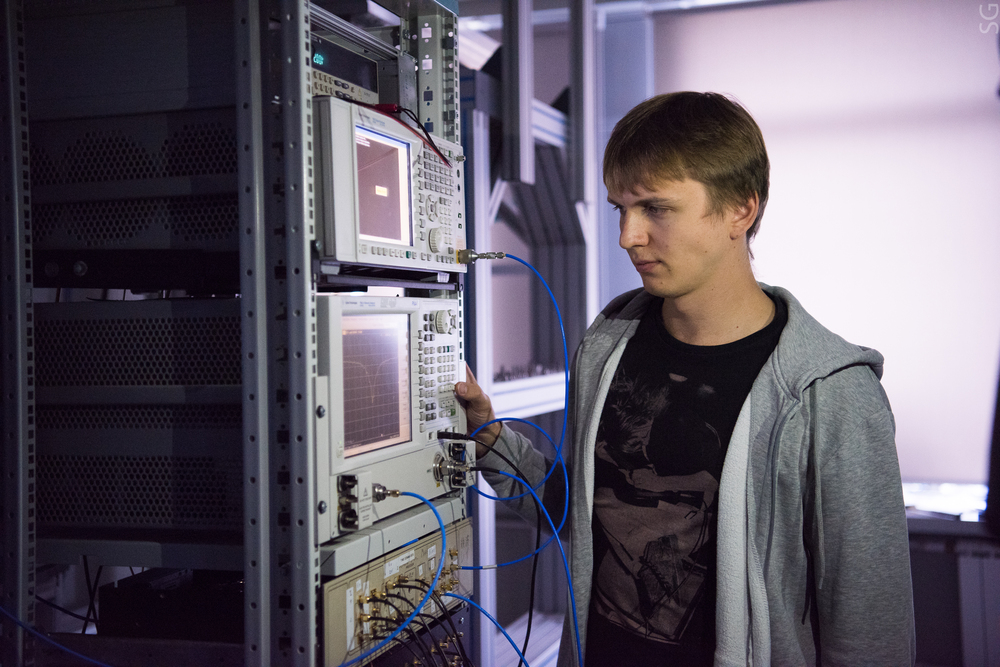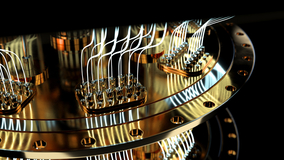Russian scientists have experimentally proved the existence of a new type of quasiparticle — previously unknown excitations of coupled pairs of photons in qubit chains. This discovery could be a step towards disorder-robust quantum metamaterials. The study was published in Physical Review B.
Superconducting qubits are a leading qubit modality today that is currently being pursued by industry and academia for quantum computing applications. However, the performance of quantum computers is largely affected by decoherence that contributes to a qubits extremely short lifespan and causes computational errors. Another major challenge is low controllability of large qubit arrays.
Metamaterial quantum simulators provide an alternative approach to quantum computing, as they do not require a large amount of control electronics. The idea behind this approach is to create artificial matter out of qubits, the physics of which will obey the same equations as for some real matter. Conversely, you can program the simulator in such a way as to embody matter with properties that have not yet been discovered in nature.
Arrays of superconducting qubits are generally described by the Bose-Hubbard model. An interesting feature of the Bose-Hubbard model is the emergence of bound boson pairs (doublons) caused by the strong quantum nonlinearity. The topological physics of doublons has been extensively explored in a series of recent theoretical works. However, the experimental investigation of topological properties of bound photon pairs is still lacking.
A group of scientists from NUST MISIS, Russian Quantum Center, ITMO University, Bauman Moscow State Technical University, Dukhov Automatics Research Institute (VNIIA) and Ioffe Institute used an array of superconducting qubits to engineer a quantum simulator. Quantum utilize entanglement and many-particle behaviors to explore and solve hard scientific, engineering, and computational problems.
“By registering the properties of qubits, we can draw conclusions about a broader class of physical systems described by the same equations. And if we can change the parameters of these equations in a controlled way, then such a device can be considered a ‘specialized simulator’. Of course, its programmability is not the same as that of a quantum computer, but its scaling requires significantly fewer resources,” explains the main author of the study Ilya Besedin, junior researcher at the NUST MISIS Laboratory of Superconducting Metamaterials.
The scientists engineered an array of superconducting transmon qubits with alternating coupling. Due to the alternation of strong and weak bonds, two zones and an edge state appear in this system. This state is classified as topological. Moreover, the experiment shows that doublons also form an edge state.
“We were able to see how doublons form these zones, and we even managed to detect how an edge doublon state appeared at the upper edge of the doublon zone as we increased the length of the array,” notes Ilya Besedin.
Thus, the scientists were able to demonstrate for the first time that a new type of quasiparticles — doublon topological excitations — can arise in qubit chains.
“Research on superconducting qubits and quantum circuits is currently underway in many countries around the world, and competition in this area is growing. This study on 11 qubits shows that Russia has attained high level of scientific development in the field of superconducting quantum computing”, notes Prof. Alexey Ustinov, Head of the Laboratory for Superconducting Metamaterials at NUST MISIS and Group Head at Russian Quantum Center, who co-authored the study.






